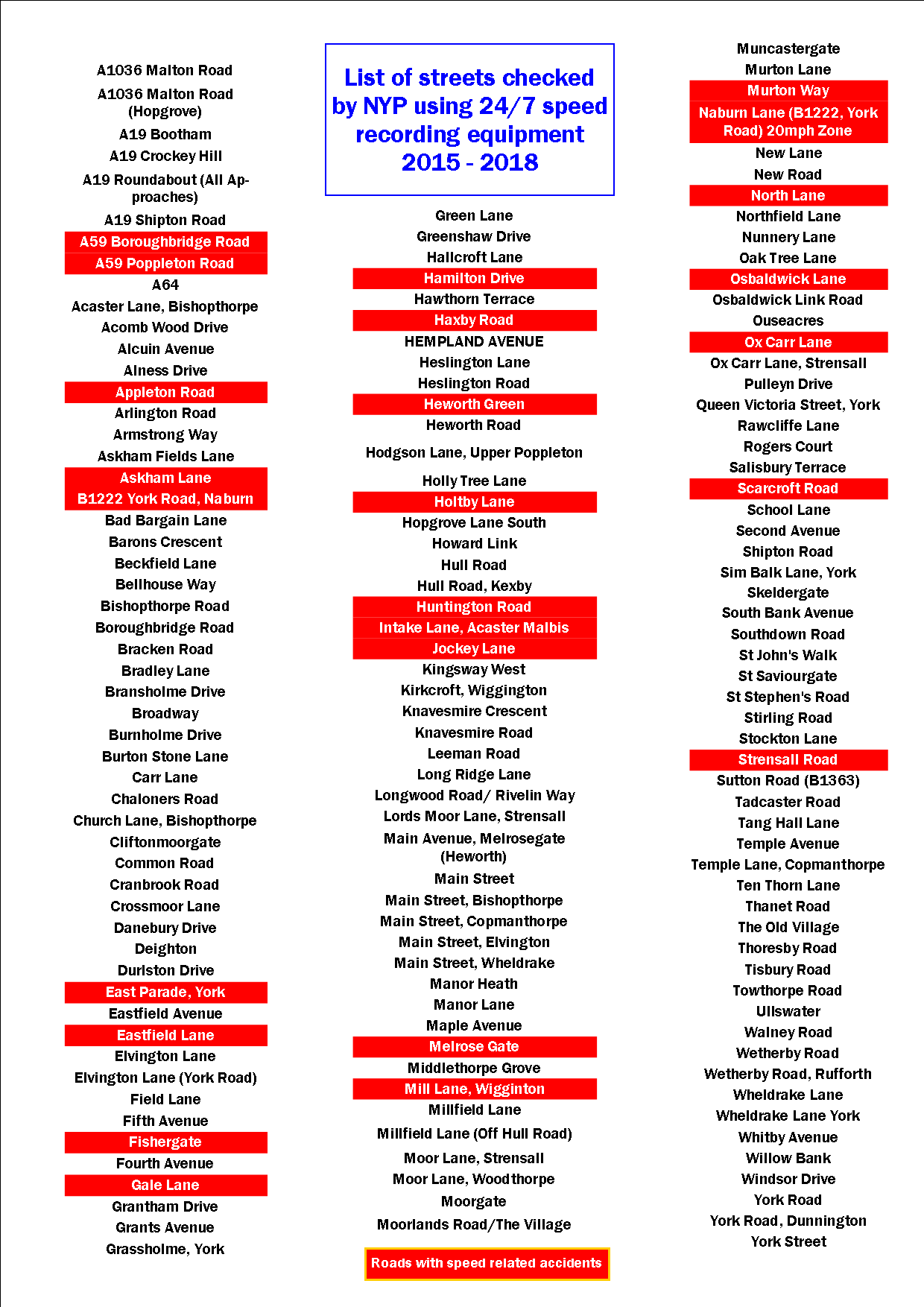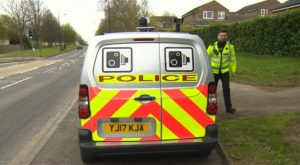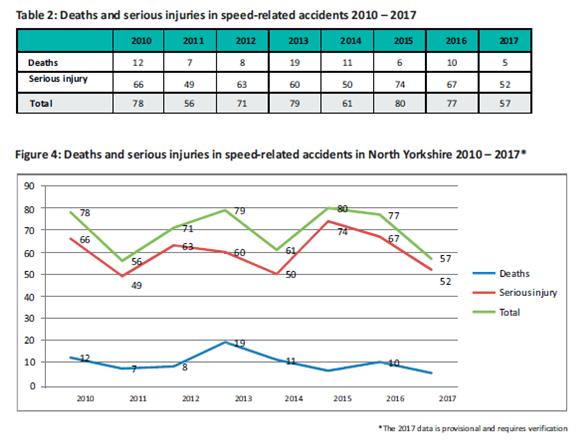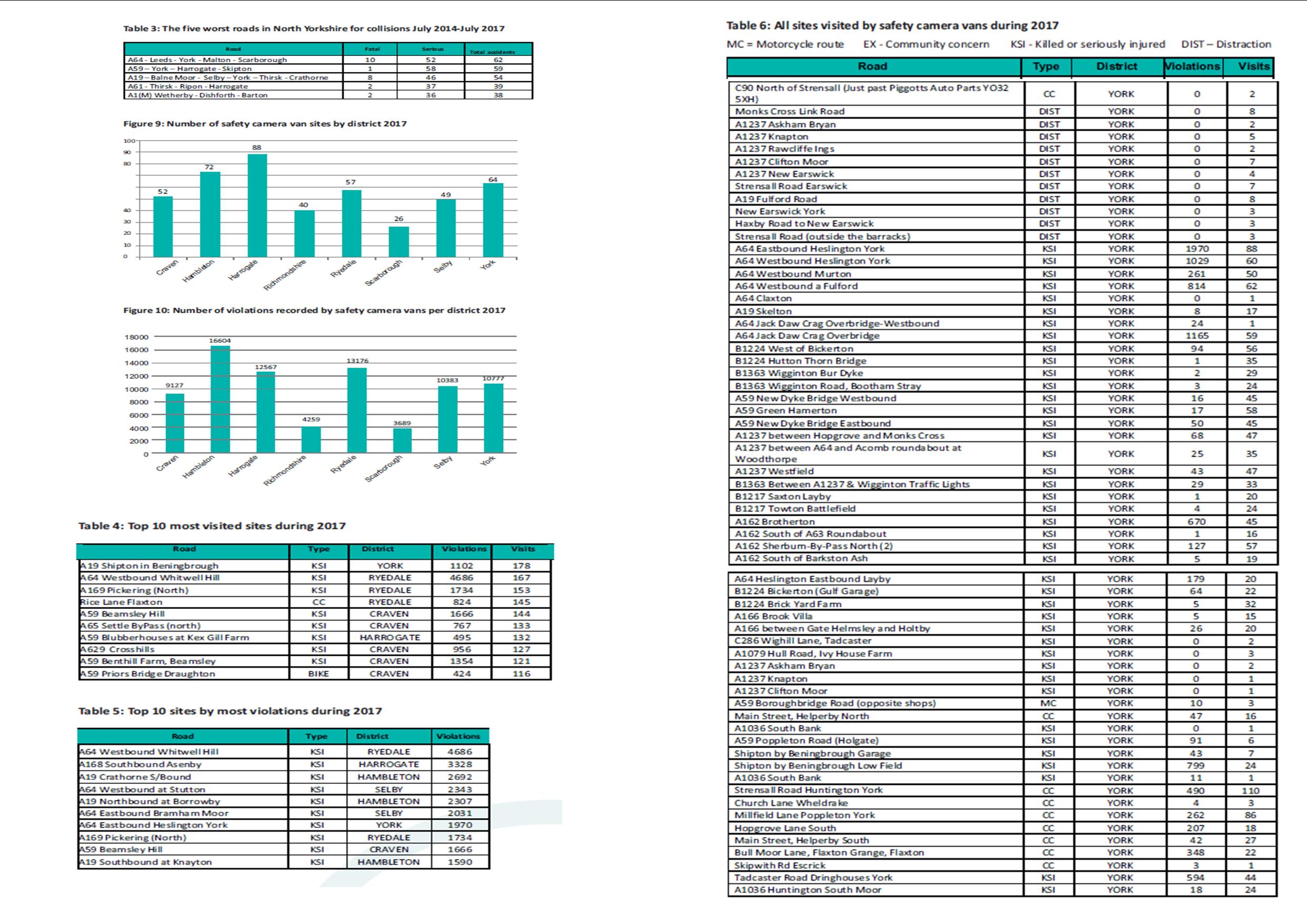 The North Yorkshire Police have published updated statistics which reveal the speed of vehicles using roads in York. The figures have been derived from automatic equipment which has been deployed over the last 4 years. Usually the sites for the equipment have been selected following complaints raised by members of the public.
The North Yorkshire Police have published updated statistics which reveal the speed of vehicles using roads in York. The figures have been derived from automatic equipment which has been deployed over the last 4 years. Usually the sites for the equipment have been selected following complaints raised by members of the public.
The stats are separate from those collected by the speed camera vans which are sometimes deployed in the area. The request for the data was partly prompted by a concern that the speed vans weren’t concentrating their time on roads with poor accident records.
250 roads have been checked in the York area during the last 4 years.
Information covering the results for the whole of North Yorkshire can be downloaded by clicking this link
The information for the monitoring equipment was routinely reported to a York Council meeting until 2015. The process was centralised in North Yorkshire thereafter and largely fell out of the public gaze.
The published information shows the mean speed and the 85%tile speed recorded on each road. The latter figure is the speed that 85% of vehicles drive within. It is most commonly used by professionals to decide whether a road has a speeding problem. (Vehicles exceeding that limit could include emergency vehicles)
The stats also record the number of accidents – where speed is an issue – recorded on each road.
There are several conclusions which can be drawn from the data:
- A 30-mph speed limit is observed by most drivers using roads in the urban area
- 20 mph speed limits are not being observed although on those roads there have been no speed related accidents while mean speeds generally remain below 30 mph. The only monitored road with an 85% speed of less than a 20 mph limit was St Johns Walk
- The only roads where there have been speed related accidents, and where drivers were routinely exceeding the speed limit, were North Lane (Huntington), Jockey Lane (Huntington), Heworth Green, Intake Lane (Acaster Malbis) Osbaldwick link Road, York Road (Naburn) and Huntington Road (nr Cats Protection office). Accident prevention works have subsequently taken place at some of the these sites.
- Of the roads with speed issues in the York area, during the early autumn, the speed camera vans visited Millfield Lane (Poppleton), Strensall Road (Huntington), the Monks Cross link road, Temple Lane (Copmanthorpe) and Tadcaster Road in Dringhouses. However, the vans spent most of their time on the A64 and A59.
Overall the figures suggest that excessive speeding is not a problem on most monitored roads in the City.
Speed related accidents are also relatively low. In the City, since the beginning of 2017, there have been 5 serious injuries caused by speeding vehicles plus a further 13 accidents which were classified as “slight”.
The York Council would be wise to reintroduce a regular public monitor of the statistics and the action taken to reduce the possibility of accidents in the future.
They could usefully begin by reinstating the missing speed warning signs (VAS) on streets like Wetherby Road.


 The
The
